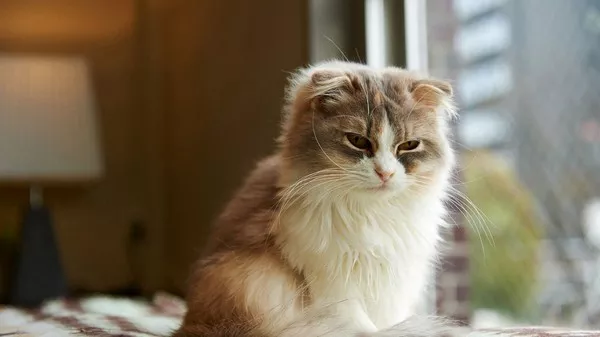Breed Overview:
The Cornish Rex cat is a breed known for its distinctive appearance and charming personality. Originating in Cornwall, England, in the 1950s, the Cornish Rex is a result of a genetic mutation that led to its unique coat structure. Unlike most cats, Cornish Rex cats lack guard hairs, which gives them their soft, curly, and wavy coat. This breed is characterized by its slender body, large ears, and almond-shaped eyes, making it a favorite among cat enthusiasts worldwide.
Shedding Characteristics:
One of the most appealing traits of the Cornish Rex is its minimal shedding. While all cats shed to some extent, the absence of guard hairs in Cornish Rex cats significantly reduces the amount of loose fur in the environment. This unique coat structure means that Cornish Rex cats shed much less than other breeds. However, it’s essential to note that they do still shed, albeit to a lesser extent.
Grooming Tips:
Although Cornish Rex cats shed less than other breeds, proper grooming is still necessary to maintain the health and appearance of their coat. Regular brushing helps remove loose fur and prevents matting, especially in areas prone to tangles, such as behind the ears and under the armpits. A gentle brush or comb designed for cats with sensitive skin is ideal for grooming the delicate coat of the Cornish Rex.
In addition to brushing, occasional baths can help remove excess oil and dirt from the coat, keeping it clean and shiny. It’s essential to use a mild, cat-friendly shampoo and to rinse thoroughly to avoid skin irritation. After bathing, towel dry the cat gently and use a hairdryer on a low setting to ensure they are completely dry, as dampness can lead to skin problems.
Regular visits to the veterinarian are also crucial for maintaining the overall health of Cornish Rex cats. The vet can provide guidance on grooming techniques, recommend suitable products for the cat’s coat, and address any health concerns that may affect shedding.
Allergen Information:
There is a common misconception that Cornish Rex cats are hypoallergenic due to their minimal shedding. However, it’s essential to understand that no cat breed is entirely hypoallergenic. Allergens such as dander, saliva, and urine are present in all cats, regardless of their breed or coat type.
While some people with allergies may find that they react less severely to Cornish Rex cats compared to other breeds, others may still experience symptoms. Factors such as individual sensitivity and the amount of exposure to allergens play a significant role in determining the severity of allergic reactions.
For allergy sufferers considering bringing a Cornish Rex cat into their home, it’s essential to spend time with the cat beforehand to gauge their reaction. Additionally, implementing measures such as regular grooming, frequent vacuuming, and using air purifiers can help reduce allergen levels in the environment.
Health Factors:
Several health factors can influence shedding in Cornish Rex cats. Stress is a common cause of increased shedding in cats, so it’s essential to provide a calm and stable environment for your pet. Changes in routine, such as moving to a new home or introducing a new pet, can be stressful for cats and may lead to excessive shedding.
Nutrition also plays a crucial role in maintaining a healthy coat and reducing shedding. A balanced diet with high-quality protein and essential nutrients is essential for the overall health of Cornish Rex cats. Consult with your veterinarian to determine the best diet for your cat based on their age, weight, and any specific health concerns.
Underlying health conditions can also affect shedding in Cornish Rex cats. Skin conditions such as allergies, fungal infections, or hormonal imbalances may lead to excessive shedding or hair loss. If you notice any changes in your cat’s shedding patterns or coat appearance, it’s essential to consult with your veterinarian for a proper diagnosis and treatment plan.
Seasonal Shedding:
While Cornish Rex cats shed less overall due to their unique coat structure, they may still experience some seasonal shedding. Like other animals, cats may shed their fur in response to changes in daylight, temperature, and hormone levels.
In warmer months, Cornish Rex cats may shed slightly more as their body adjusts to the higher temperatures. This shedding helps them regulate their body temperature and stay cool during hot weather. Regular grooming during these periods can help minimize loose fur in the environment and prevent matting.
In colder months, Cornish Rex cats may experience less shedding as their body conserves heat to stay warm. However, indoor cats may not experience significant seasonal shedding changes since they are not exposed to the same environmental cues as outdoor cats.
Comparison with Other Breeds:
When compared to other low-shedding cat breeds, such as the Sphynx and the Devon Rex, the Cornish Rex stands out for its unique coat texture and minimal shedding. While Sphynx cats are hairless and Devon Rex cats have a short, curly coat, Cornish Rex cats have a soft, wavy coat that sheds less due to the absence of guard hairs.
Each of these breeds has its own grooming requirements and shedding patterns, but all offer the benefit of reduced shedding for cat owners seeking a cleaner home environment. Ultimately, the choice between these breeds depends on personal preference and lifestyle factors, such as allergy considerations and grooming commitments.
In conclusion, while Cornish Rex cats shed less than other breeds due to their unique coat structure, proper grooming and care are still essential for maintaining their health and appearance. Understanding the factors that influence shedding, from grooming techniques to seasonal changes, can help cat owners provide the best possible care for their furry companions. By incorporating these tips into their routine, owners can enjoy a happy and healthy relationship with their Cornish Rex cat for years to come.
Related Topics:

























